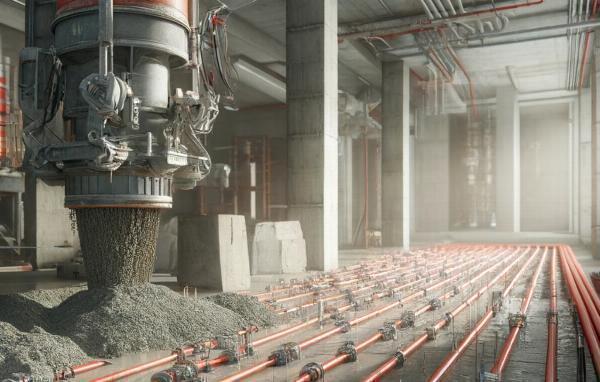The Role of a Hindu Temple Architect: Balancing Spirituality and Structural Integrity

Hindu temples are more than just places of worship; they are living embodiments of spirituality, culture, and ancient wisdom. Each structure represents a bridge between the earthly and the divine, meticulously designed to create an atmosphere of peace and devotion. Behind these magnificent edifices lies the expertise and creativity of a Hindu temple architect. These visionaries harmonize intricate spiritual principles with precise structural techniques to create architectural masterpieces that stand the test of time. Let us delve deeper into the critical role of a Hindu temple architect and how they balance spirituality and structural integrity in Temple Architecture.
The Essence of Temple Architecture
Temple Architecture in Hinduism is deeply rooted in ancient texts like the Vastu Shastra and Shilpa Shastra. These scriptures serve as blueprints, guiding the design and construction of temples. A Hindu temple architect must possess a profound understanding of these texts, which dictate everything from the temple’s orientation and proportions to the placement of deities and decorative carvings.
At the heart of Temple Architecture lies the principle of creating a sacred space that mirrors cosmic harmony. A temple is envisioned as a microcosm of the universe, with every element symbolizing a connection to the divine. The sanctum sanctorum (garbhagriha), the tower (shikhara), and the circumambulatory paths are all designed to facilitate spiritual journeys for devotees.
Balancing Spirituality and Structural Integrity
Creating a temple is not merely about erecting a structure; it is about manifesting a divine energy center that resonates with spiritual vibrations. To achieve this, a Hindu temple architect must skillfully balance spirituality with structural integrity. Here’s how:
1. Adherence to Vastu Shastra and Shilpa Shastra
These ancient treatises lay the foundation for temple design. Vastu Shastra governs the spatial orientation and layout, ensuring that the temple aligns with cosmic forces. For instance, temples are typically oriented eastward to capture the first rays of the rising sun, symbolizing enlightenment.
Shilpa Shastra, on the other hand, provides guidelines for the artistic and sculptural elements. It specifies the proportions of idols, the detailing of carvings, and the symbolism of decorative motifs. By adhering to these texts, the architect ensures that the temple serves as a conduit for divine energy while maintaining aesthetic and structural coherence.
2. Site Selection and Analysis
The first step in Temple Architecture is selecting the site. A Hindu temple architect conducts a detailed analysis of the land, considering factors like soil quality, water availability, and environmental harmony. The site is then consecrated through rituals to purify and prepare it for the construction of a sacred space.
3. Structural Design and Materials
While spirituality is paramount, structural integrity cannot be compromised. A Hindu temple architect employs advanced engineering techniques to ensure that the temple can withstand natural calamities and the passage of time. Traditional materials like stone, wood, and metals are often used for their durability and sacred significance.
Each component of the temple—from the towering gopuram to the intricate ceilings—is meticulously crafted to bear the load and stress while reflecting the sanctity of the structure. The use of interlocking stones in ancient temples, for instance, showcases the ingenuity of architects in creating earthquake-resistant designs.
4. Integration of Symbolism
Symbolism is integral to Temple Architecture. Every element—be it the lotus motif on a pillar or the depiction of celestial beings on walls—carries a deeper meaning. The Hindu temple architect ensures that these symbols are seamlessly integrated into the structure, inspiring awe and devotion in visitors.
For example, the towering shikhara represents Mount Meru, the mythical axis of the universe, while the garbhagriha symbolizes the womb of creation. By incorporating these elements, the architect transforms the temple into a spiritual and philosophical narrative.
5. Facilitating the Devotee’s Journey
The layout of a Hindu temple is designed to guide devotees on a spiritual journey. Starting at the entrance, they pass through increasingly sacred spaces, culminating in the garbhagriha, where the deity resides. A Hindu temple architect ensures that this progression is not only spiritually enriching but also structurally sound, providing smooth transitions and unobstructed paths.
Acoustics and lighting also play a crucial role. The architect strategically designs domes and corridors to amplify devotional chants, creating a meditative ambiance. Similarly, natural light is harnessed to illuminate the deity, enhancing the spiritual experience.
Modern Challenges and Innovations
While traditional principles remain the cornerstone of Temple Architecture, modern Hindu temple architects face new challenges. Urbanization, limited space, and contemporary construction materials necessitate innovative approaches.
1. Urban Constraints
In cities, temples are often built on smaller plots, requiring compact yet spiritually compliant designs. Architects must creatively adapt traditional layouts to fit urban settings while preserving their sanctity.
2. Sustainable Practices
Modern architects are increasingly incorporating sustainable practices into temple design. Using eco-friendly materials, harnessing solar energy, and ensuring efficient waste management are some ways they align ancient wisdom with modern environmental consciousness.
3. Technological Advancements
The use of technology has revolutionized Temple Architecture. From 3D modeling software to laser carving tools, architects now have access to advanced techniques that enhance precision and efficiency. However, they must balance these modern tools with the traditional craftsmanship that gives temples their unique character.
The Legacy of Hindu Temple Architects
Throughout history, Hindu temple architects have left an indelible mark on Indian culture. From the intricate carvings of the Khajuraho temples to the towering brilliance of the Brihadeeswarar Temple, their creations are timeless testaments to their genius.
These architects were not just builders; they were visionaries who blended science, art, and spirituality. They upheld the traditions of Temple Architecture while pushing the boundaries of innovation. Today, their legacy continues to inspire a new generation of architects dedicated to preserving and evolving this ancient art form.
Conclusion
The role of a Hindu temple architect is both profound and multifaceted. By harmonizing spirituality with structural integrity, they create spaces that transcend the material realm and connect devotees to the divine. Temple Architecture is not merely about constructing buildings; it is about shaping experiences and preserving cultural heritage.
As custodians of this sacred tradition, Hindu temple architects carry the responsibility of honoring ancient wisdom while adapting to the needs of a changing world. Their work stands as a beacon of devotion, artistry, and engineering brilliance, ensuring that temples remain sanctuaries of spiritual solace for future generations.
Note: IndiBlogHub features both user-submitted and editorial content. We do not verify third-party contributions. Read our Disclaimer and Privacy Policyfor details.







